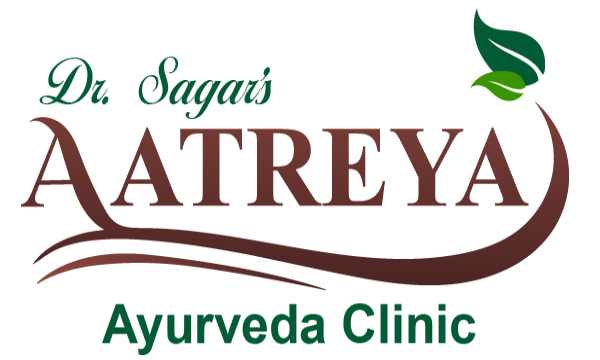Symptoms of osteoarthritis:
- Moderate to severe pain in the affected joint
- Stiffness of joints, especially after long periods of rest to the
affected joint
- Restricted and painful movements of the joint
- Crunching or crackling sounds during movements of the affected joint
(crepitation)
- Localised tenderness in severe cases
- Swelling
- Increased local temperature at the affected site.
Diagnostic tests
X-ray: X-ray images can highlight damage and other changes
typical to osteoarthritis to confirm the diagnosis.
Remedies in Ayurveda
Ayurvedic remedies for Osteoarthritis are known to prevent further deterioration
in the joints, besides rejuvenating damaged cartilage. Vata-alleviating
interventions with specific herbs are suggested for lubrication and
strengthening of the joints. It should be noted that the same ought to be taken
under the supervision of a Registered Ayurvedic Physician.
Shamana (Palliative) treatment:
The following drugs (single / compound formulations) are commonly used for the
prevention and control of osteoarthritis (sandhivata):
- Single Drugs
- Shunthi (Zingiber officinale Rose.) churna, Eranda Mula (Ricinus
communis Linn.) Kvatha, Nirgundi (Vitex negundo Linn.)
- kvatha, Guggulu (Commiphora wrightii Arn.)
- Nirgundi
- Eranda
Compound Formulations (Bold)
- Sunthi
- Guduchi
- For internal use: Maharasnadi kvatha, Dashamula kvatha, Rasnadi kvatha,
Maha Yogaraja guggulu, Yogaraja guggulu, Guggulutikta ghrita,
Panchatikta ghrita guggulu
- For external application: Mahanarayana taila, Vishagarbha taila,
Narayana taila, Mahamasha taila, Saindhavadi taila
Samshodhana Chikitsa (Purificatory procedures):
A specialised therapeutic approach of Ayurveda, it eliminates toxins from the
body by giving Panchakarma, followed by Shamana Chikitsa (Palliative therapy).
That said, to implement this procedure (or not) should be decided by a physician
after a thorough and deep study of the patient's condition and abilities.
- i) Local application of Eranda patra kalka, Dashanga lepa
- ii) Snehana (external): massage with medicated oils such as Mahanarayan
taila, Dashamula taila, Mahamasha taila, Vishagarbha taila
- iii) Snehapana (Internal Oleation) by Guggulutikta ghrita / Panchatikta
ghrita with Saindhava lavana
- iv) Svedana (Medicated fomentation): (localised or generalized hot
fomentation)
Patra pinda swedana (photograph)
Rasayana : Rason, Guggulu, Bala, Nagabala, Ashvagandha.
Ashwagandha Lasuna Bala (photographs)
Preventive measures:
Osteoarthritis, being an age-related degeneration aggravated by one's lifestyle
options, its prevention and control call for a mix of medication, and change in
food habits besides a change in one's lifestyle
Dos include:
- Regular and sustained intake of healthy foods rich in Madhura (sweet),
Amla (sour), Lavana (salt) and Snigdha (unctuous) food, Garlic, Ginger,
Hingu, and Black pepper to name a few.
- Regular physical activity for multiple benefits, including maintaining
an ideal weight, while protecting injured/ affected joints
- Avoiding excessive repetitive motions, especially of the affected
joints
Don’t include:
- Long periods of fasting or consuming excessive quantities of food-
especially those heavy in oils, fats and carbs
- Staying awake well past normal sleeping time (Ratri jagaran)
- Suppressing natural urges (Vega vidharana)
- Prolonged exposure to stressful situations
- Prolonged period of standing,
- Overexertion and injury to joints
Note:
- Prescribed medication to be taken strictly under the supervision of a
Registered Ayurvedic Physician
- Visit National Institutes/ CCRAS Research Centres for necessary
consultation.
- (www.ccras.nic.in)
FAQ:
-
Wear and tear of the joints causes the surrounding
cartilages to rapidly thin out, thus reducing the natural
barrier which separates the joints from rubbing against each
other in daily life. For a person suffering from this, when
bones of the affected joints come in direct contact with each
other, it can lead to pain, swelling and loss of motion, besides
constant clicking sounds.
-
What joints are most affected by osteoarthritis
While it can occur in any joint, it commonly
occurs in the joints that bear weight, like hands, hips, knees,
spine, neck etc.
-
How is osteoarthritis diagnosed?
Healthcare uses a combination of studies and tests
to determine if osteoarthritis is the cause of the pain. These
may include:
- Medical history
- Physical examination, and
- X-rays reports
-
What is the role of nutrition and diet in the treatment of Osteoarthritis?
The diet should include calcium with extra attention, along with a combination of whole grains, black beans, spinach, cabbage, carrot, cucumber, tomatoes, banana, orange, lemon, honey, raisins, fatless cottage cheese and coconut oil. It is advisable to avoid foods rich in fats. Drinking plenty of water is recommended as water provides lubrication to the joints and reduces the risk of osteoarthritis.
-
How do I know whether I am having? Or, what are the warning signs of Osteoarthritis?
Warning signs include:
- Joint pains
-
- Swelling or tenderness in one or more joints
-
- general feeling of stiffness after being in bed or sitting for a long time
-
- A clicking/ crunching sound from joints (mainly the knees).
-
Not everyone with osteoarthritis develops symptoms. In fact, only a third report pain or other symptoms that, in most cases, are confirmed by an X-ray examination.
-
Can exercise help treat osteoarthritis?
Yes, exercise is one of the best treatments. It can decrease pain besides maintaining a healthy weight. The quantum and form of exercise will depend on which joints are involved. The following types of exercise are found beneficial, but must be attempted under the strict supervision of a competent physician:
- trengthening exercises.
- erobic activities.
- ange-of-motion activities.
- alance and agility exercises.
-
Are there activities that increase the risk of Osteoarthritis?
Activities that increase the risk of osteoarthritis include:
- Twisting of the leg (E.g. Football or baseball sport)
- Jerky movement
- Prolonged standing (E.g. in the case of Traffic policemen)
- Prolonged kneeling (E.g. Coal miners)
- Squatting
-
What are some dos and don’ts for an osteoarthritis patient?
Include a brisk walk of 30 to 40 minutes in your schedule 3 to 4 days a week, be it in the morning or evening. Bend at your knees with your back straight to pick up any object from the ground. Avoid cross-knee sitting. Avoid lifting heavy weights. Avoid prolonged duration of activities that strain the joints, like gardening, prolonged standing, kneeling and squatting, etc.
-
When should I consider surgery?
When conservative measures for treating osteoarthritis fail and pain in a specific joint disables one's life, surgery may be the only and last option to restore comfort and the ability to pursue a normal life. Since such a surgery will relieve pain more than it will restore range of motion, the best candidate for surgery is the patient whose arthritic pain has interrupted the activity of daily living (i.e. can't walk more than a block or awakens from sleep with pain in the affected joint) and who hasn't found desired relief from lifestyle modifications, physical therapy and drugs. For such a class of patients, surgery relieves joint pain and improves the quality of life.

